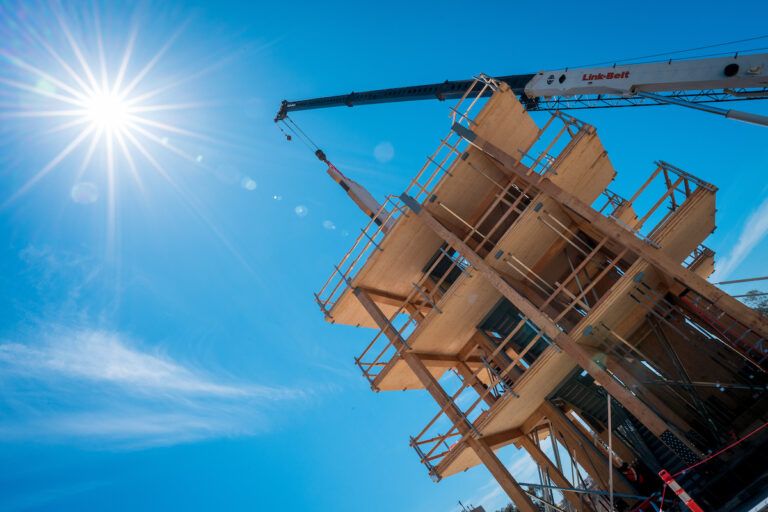Published on April 13, 2023

For nearly two decades, the University of California San Diego has been home to a key instrument for understanding earthquakes: a 40-by-25-foot steel platform that uses a hydraulic system to mimic seismic movements. This “shake table,” which can literally shake whatever is on top of it, is one of the largest in the world. It has been used to test more than 30 structures since it was opened in 2004, with the results informing changes to building codes and road regulations. But for the past nine months, the table has stood still as an unprecedented experiment was prepared for it: a bespoke 10-story wooden building, the highest ever to be put to a high-magnitude test.
According to principal investigator Shiling Pei, the goal of the aptly-named TallWood project is to prove that wooden buildings can withstand strong shaking without losing their structural integrity. With a lower carbon footprint than concrete or steel, wood has become an increasingly popular choice in recent years as a more sustainable building material. Plus, the flexibility of wooden structures makes them particularly well-suited to riding out earthquakes.
Co-principal investigator Jeffrey Berman, a civil engineering professor, described the overall composition during a NHERI radio interview as an essentially “damage-free structural system” since this design can accommodate an abundance of movement.
Continue reading at Popular Science.
Originally written by Colleen Hagerty for Popular Science.